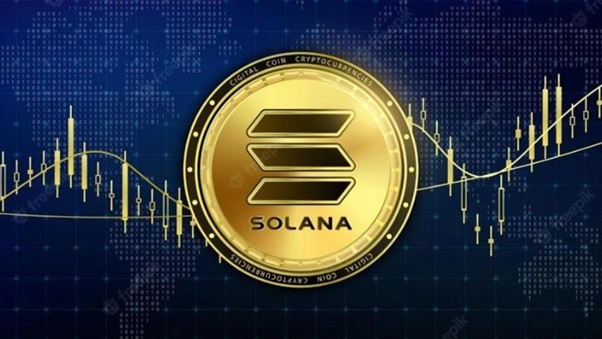
Base, a leading provider of cloud-based software solutions, has announced the launch of its new security monitoring system named Pessimism. The system is designed to detect and prevent cyberattacks, data breaches, and other threats that could compromise the security and privacy of Base’s customers.
Pessimism is based on the principle of “expect the worst, prepare for the best”. The system uses advanced artificial intelligence and machine learning techniques to analyze the behavior and patterns of potential attackers, and to proactively block or mitigate any malicious activity. Pessimism also provides real-time alerts and reports to Base’s security team, enabling them to respond quickly and effectively to any incidents.
According to Base’s CEO, Pessimism is a game-changer in the field of cybersecurity. “We are proud to introduce Pessimism, our innovative security monitoring system that leverages the power of AI and ML to protect our customers from cyber threats. Pessimism is not just a name, it’s a philosophy. We believe that by anticipating the worst-case scenarios, we can better prepare ourselves and our customers for any challenges that may arise. Pessimism is not about being negative, it’s about being realistic and proactive.”
Tekedia Mini-MBA edition 16 (Feb 10 – May 3, 2025) opens registrations; register today for early bird discounts.
Tekedia AI in Business Masterclass opens registrations here.
Join Tekedia Capital Syndicate and invest in Africa’s finest startups here.
Base’s customers can access Pessimism through their existing accounts and enjoy the benefits of enhanced security and peace of mind. Base claims that Pessimism can reduce the risk of cyberattacks by up to 90% and improve the response time by up to 80%. Base also offers a free trial period for new customers who want to try out Pessimism before committing to a subscription.
Pessimism is the latest addition to Base’s suite of cloud-based software solutions, which include CRM, ERP, HRM, and more. Base aims to provide its customers with the best tools and services to help them grow their businesses and achieve their goals. With Pessimism, Base hopes to strengthen its reputation as a trusted and reliable partner in the digital world.
Solana’s decline in active addresses is only part of the story.
Solana, the blockchain platform that claims to offer fast, scalable and low-cost transactions, has seen a significant drop in its number of active addresses in the past month. According to data from Coin Metrics, Solana’s active addresses peaked at over 1.2 million on September 9, 2023, but have since fallen by more than 80% to around 200,000 as of September 24, 2023.
Some analysts have attributed this decline to the network outage that occurred on September 14, 2023, when Solana experienced a denial-of-service attack that caused the network to stall for nearly 18 hours. The incident raised questions about Solana’s security and decentralization and may have shaken the confidence of some users and investors.
However, Solana’s decline in active addresses is only part of the story. There are other factors that may explain why Solana’s activity has not recovered to its previous levels, and why it may not be a reliable indicator of its long-term potential.
One factor is the seasonality of crypto markets. Historically, crypto activity tends to be higher in the summer months and lower in the fall and winter months. This is partly due to the influence of traditional financial markets, which also exhibit seasonal patterns, and partly due to the psychological effects of weather and holidays on investor sentiment. Therefore, it is possible that Solana’s decline in active addresses is partly a reflection of the broader crypto market slowdown that usually occurs around this time of the year.
Another factor is the nature of Solana’s user base. Unlike some other blockchains that have a more diverse and distributed user base, Solana’s activity is largely driven by a few large applications and platforms that run on its network. For example, according to DappRadar, the top five dapps on Solana account for over 90% of its total transaction volume. These include FTX, Serum, Raydium, Audius and Radium. These dapps are mostly focused on decentralized finance (DeFi) and non-fungible tokens (NFTs), which are two of the most popular and volatile sectors in the crypto space.
Therefore, Solana’s active addresses may fluctuate depending on the performance and popularity of these dapps and their underlying markets. For instance, FTX, which is one of the largest crypto exchanges in the world and a major supporter of Solana, recently launched its own NFT marketplace on Solana. This may have attracted a lot of new users and activity to Solana in September, but also exposed it to more competition and volatility. Similarly, Audius, which is a decentralized music streaming platform that runs on Solana, saw a surge in users and activity after partnering with TikTok in August, but may have faced some challenges in retaining and engaging them in September.
Therefore, it is important to look beyond the number of active addresses and consider the quality and diversity of Solana’s user base and use cases. While Solana may have fewer active addresses than some other blockchains, it may have more loyal and engaged users who are using its network for high-value and innovative applications. Moreover, Solana may have more room for growth and adoption as it continues to develop its technology and ecosystem.
Solana’s decline in active addresses is only part of the story. While it may indicate some challenges and risks for Solana’s network performance and user retention, it may also reflect some external and temporary factors that are not specific to Solana. Therefore, it is not wise to judge Solana’s long-term potential based on its short-term activity alone. Rather, it is more prudent to look at its fundamentals and vision, which are still strong and promising.



